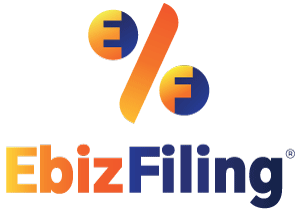
-
December 28, 2023
How to Remove a Charge on Your Immovable Property?
Table of Content
Introduction
A charge on immovable property is an authorized privilege that enables a lender to use the asset as collateral to secure a debt. This implies that the lender has the power to seize the property and sell it to recover the unpaid debt if the borrower defaults on the loan. Immovable property charge removal can be a difficult process that needs careful planning and execution. In this article, we will discuss the steps involved in removing a charge on your immovable property.
What is a charge on Immovable Property?
A charge on immovable property refers to a legal right or interest that a lender or creditor has over property owned by a borrower or debtor. It is a security interest that the lender or creditor holds over the property to secure a debt or loan that the borrower has taken from them.
How to Remove a Charge on Your Immovable Property?
The steps to remove a charge on your immovable property while filing Form-CHG 4 are discussed below:
Step 1: Review the documentation
Gather all the relevant documents related to the charge, such as the mortgage deed, lien documents, or any other recorded encumbrances. Carefully review these documents to understand the terms and conditions associated with the charge.
Step 2: Identify the outstanding balance
Calculate the charge’s outstanding balance. If it’s a mortgage, get in touch with your lender to find out the precise sum needed to payoff the mortgage. Calculate the sum due to the lien holder in the event of a lien or other encumbrance.
Step 3: Set up a settlement for the outstanding balance
Make plans to payoff the balance that is due. This normally entails paying off the loan completely, which could include the principal sum, interest, and any other related costs. Decide on the appropriate payment options and get a payoff statement in coordination with the mortgage lender or lien holder.
Step 4: Obtain a release or dismissal of the charge
After the outstanding debt has been paid in full, you must do this. The charge has been fulfilled and is no longer enforceable, which is acknowledged in this document. Upon receiving the complete payment, the mortgage lender or lien holder will typically provide it.
Step 5: File the form of release with the required authorities
Depending on your jurisdiction, you might have to submit the release form CHG-4 to the applicable body in charge of keeping property records. This could be a county clerk’s office, a land registry office, or another comparable organization. The charge will be formally erased from the property records after the release is filed.
Step 6: Update your property records
It’s vital to update your property records following the filing of the release in order to reflect the dismissal of the charge. Contacting the regional agency in charge of property taxation or assessment may be necessary. Give them the relevant records so they can make the appropriate updates to their records.
FAQs on removing a charge on immovable property
-
What is a charge on immovable property?
An immovable property charge is a debt or obligation secured by a lender or creditor’s right or interest in or over the property. It is created when the immovable property of one person is used as security for the payment of a debt, and the transaction does not amount to a mortgage.
-
What is the process for removing a charge on immovable property?
The process for removing a charge on immovable property involves reviewing the documentation, identifying the outstanding balance, setting up a settlement for the outstanding balance, obtaining a release or dismissal of the charge, and filing the form of release with the required authorities.
-
How can I remove a charge on my immovable property?
To remove a charge on your immovable property, you need to repay the debt for which the charge was created, obtain a discharge document, register the discharge document, and confirm the removal. If the charge is obsolete, unenforceable, or expired, you can apply to the court for its removal.
Conclusion
Removing a charge on your immovable property can be a complex and time-consuming process, but it is essential if you want to sell or transfer the property. The key steps involved in removing a charge include obtaining the discharge document, paying off the debt, registering the discharge document, and confirming the removal. It is important to seek professional advice and guidance before initiating the process to ensure that you understand the legal requirements and potential risks involved. By following these steps and seeking expert guidance, you can successfully remove a charge on your im movable property and secure your financial future.
Suggested Read: Charge Registration Process for Property Owners
Register Charge against Property
Availed loan from a bank against property? Registration of charge is mandatory if you are a private limited or limited company.
About Ebizfiling -





Reviews
Akshay Shah
17 Jun 2017I would give them 4 stars for their efficiency and pricing.
Karthik
05 Apr 2019Awesome Service! I am very happy with the way the process is being handled. Snehal also followed up constantly to ensure that the items are completed on time successfully. Thanks for your service.
Govindaraju H S gopi
29 Mar 2022I took my company registration from Ebizfiling india private limited and also other service... Good platform to any online services as work shall be done with most effient manner
April 22, 2024 By Team Ebizfiling
MSME Registration Fees: Recognizing the Relevant Charges Registration with the relevant authorities is necessary to receive the benefits and incentives offered to MSMEs. Entrepreneurs, however, frequently want clarification on MSME registration fees. The intricacies of MSME registration charges are explored […]
April 19, 2024 By Team Ebizfiling
Frequently Asked Questions (FAQs): A Guide to Understanding Form 15CA and Form 15CB The Indian Income Tax Department requires Forms 15CA and 15CB to facilitate overseas transactions and guarantee that tax requirements are followed. Remittances from Indian citizens to non-residents […]
April 15, 2024 By Team Ebizfiling
Comprehending Taxation and Compliance for Transport Business Startup Understanding taxation and compliance is not just necessary, but crucial for entrepreneurs considering launching a transportation business. Before you understand how to start a travel business in India, you should read the […]